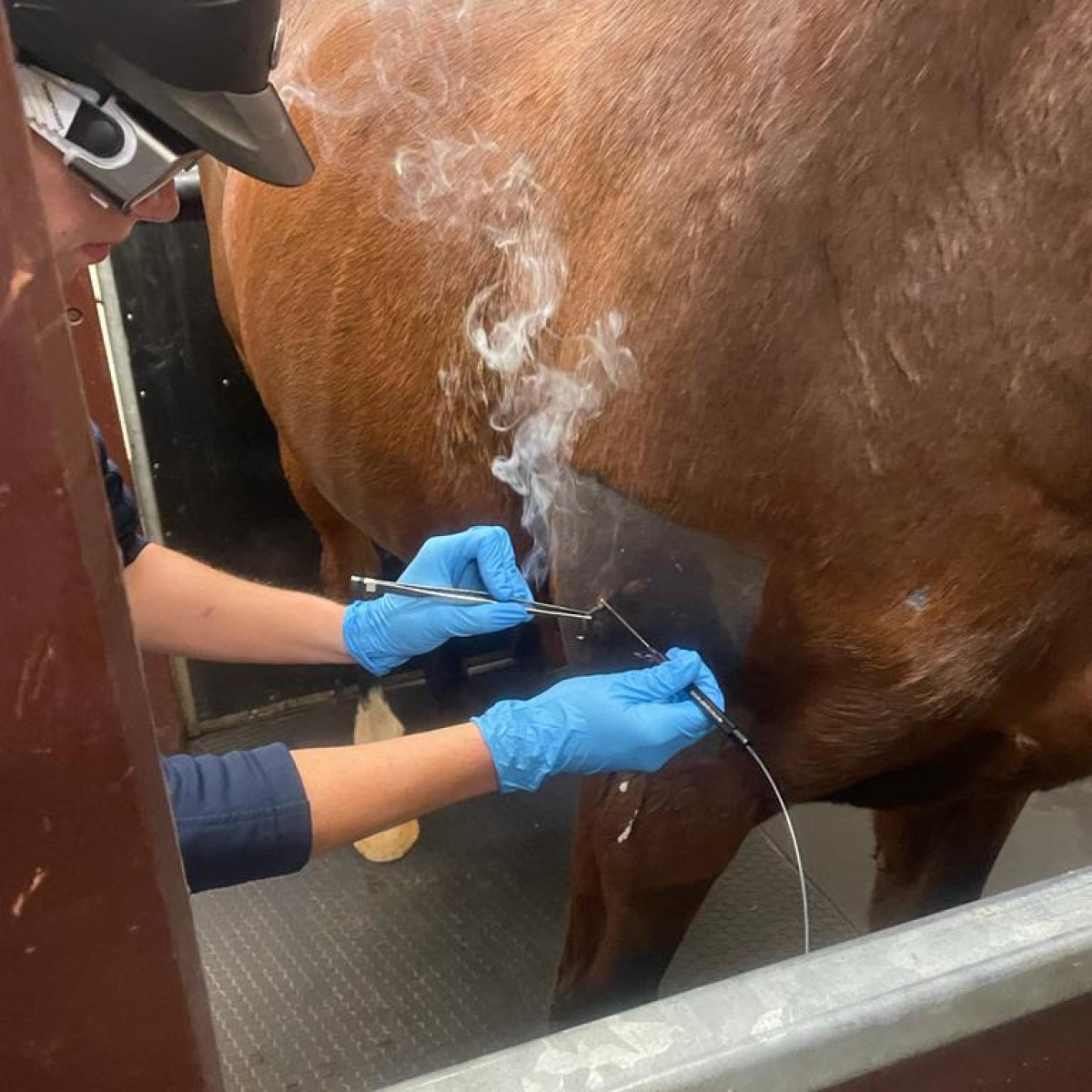Examining the Performance of Laser Treatment in Equine Treatment for Injury Rehabilitation
The evaluation of laser treatment's performance in equine injury recovery pivots on several aspects, consisting of healing time, discomfort reduction, and tissue regrowth. Veterinarians frequently observe premium results with laser treatment contrasted to traditional techniques, placing it as an important element in equine treatment.
Recognizing Laser Treatment
Laser therapy has actually become an essential device in veterinary medication, specifically in the treatment of equine problems. Understood for its non-invasive nature and effectiveness, laser treatment involves the application of particular wavelengths of light to promote tissue repair service and decrease inflammation. This healing technique is significantly preferred for its ability to accelerate the recovery procedure in horses experiencing a selection of bone and joint injuries and persistent problems.
The main system behind laser treatment is its capability to enhance mobile features. Furthermore, laser therapy promotes vasodilation, enhancing blood flow and oxygen distribution to broken cells, therefore accelerating recovery.
In equine medication, laser therapy is specifically useful for conditions such as tendonitis, osteoarthritis, and wound recovery. The technique is admired for its pain-relieving homes, permitting steeds to gain back mobility and function a lot more rapidly. Veterinarians additionally value its very little negative effects compared to other therapy methods, making it a dependable and risk-free option for equine treatment.

Exactly How Laser Treatment Works

Upon absorption, these photons activate a collection of biochemical adjustments, improving mitochondrial feature and leading to enhanced adenosine triphosphate (ATP) production. This rise in ATP accelerates cellular metabolic rate, promoting tissue repair work and regrowth. Additionally, laser therapy regulates inflammatory responses by influencing cytokine levels and decreasing oxidative stress, thus relieving discomfort and swelling.
Another considerable aspect of laser treatment is its role in improving microcirculation. The treatment advertises vasodilation, improving blood circulation and oxygen distribution to broken tissues (Equine Therapy). This helps with the elimination of cellular particles and supports the spreading of fibroblasts and collagen synthesis, crucial for wound recovery
Medical Evidence
The effectiveness of laser treatment in equine therapy has been validated through numerous professional research studies, showcasing its healing possible across a range of conditions. A research study carried out by Turner et al. (2012) demonstrated that steeds treated with low-level laser therapy (LLLT) for tendon injuries exhibited increased healing compared to those getting traditional therapies.
Similarly, research by Johnson and coworkers (2015) concentrated on equine muscular tissue injuries, disclosing that laser therapy significantly accelerated muscle fiber regrowth and reduced muscle tightness. These findings were substantiated by histological evaluations showing better muscle mass tissue organization. Scientific assessments have actually revealed that laser treatment can alleviate persistent problems such as osteo arthritis. A study by Smith et al. (2018) reported that horses with osteoarthritic joints experienced remarkable pain relief and boosted range of activity following a regimen of laser therapy sessions. link
Vet Insights

Vets also appreciate the adaptability of laser treatment. She points out that laser treatment can be tailored to the certain requirements of each equine, ensuring ideal outcomes.
In addition, vets value the capability to incorporate laser treatment with various other therapy techniques. This multimodal technique can boost overall therapy efficiency, supplying a comprehensive solution for equine recovery. Such recommendations from experienced specialists emphasize the growing approval and application of laser therapy in equine medication.
Practical Considerations
A key element of carrying out laser treatment in equine therapy includes understanding the click here to read sensible factors to consider that ensure its efficacy and safety. It is critical to choose the suitable laser tool, as numerous kinds vary in wavelength, power, and penetration depth. Vets need to be fluent in these specifications to customize therapy methods successfully to each injury kind
Furthermore, the regularity and duration of laser treatment sessions require mindful preparation to make best use of therapeutic benefits while lessening any type of possible damaging results. Constant surveillance of the equine's reaction to treatment can guide necessary changes in the therapy regimen. Establishing a risk-free and regulated setting during therapies is additionally vital to avoid unintended exposure to laser exhausts, which can damage both the horse and the trainer.
Training and certification of employees carrying out laser therapy are paramount to make sure proper method and to support security standards. Furthermore, maintaining precise documents of each session, consisting of laser setups and observed results, is essential for assessing the general efficiency of the therapy and for making data-driven choices.
Final Thought
Laser therapy has arised as a reliable modality in equine injury recovery, supplying significant benefits in recuperation time, discomfort alleviation, and cells recovery. For ideal results, continuous monitoring and customized therapy protocols stay crucial in leveraging the full capacity of laser treatment in equine treatment.